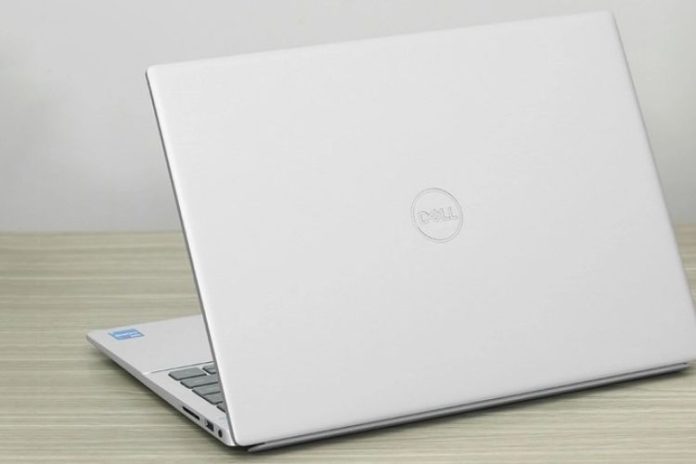Laptop Screen Flickering: Causes and Cost-Effective Fixes
A flickering laptop screen can be a nuisance and an expensive problem to fix. Follow this article to learn the causes and effective, affordable ways to resolve this issue.
Causes of a Flickering Laptop Screen
When a laptop screen flickers, it’s due to various symptoms like pixelation, color distortion, or the appearance of colored or blue horizontal lines. Several factors can lead to a flickering screen, causing discomfort to the user:
Laptop being dropped or experiencing a hard impact with a surface
Unstable or fluctuating power supply to the laptop
Faulty laptop screen due to prolonged use, resulting in incorrect refresh rates
/fptshop.com.vn/uploads/images/tin-tuc/180165/Originals/8.jpg)
Flickering caused by the high-voltage board
Damaged graphics card or video card
Loose, broken, or exposed laptop display cable
How to Fix a Flickering Laptop Screen
Check the Jack Plugs and Connectors
Ensure the jack plugs are inserted correctly and tightly. Next, inspect the connecting cable to the laptop display for similar issues.
If both the jack plugs and display cable are securely connected, replace the cable with a new one. Finally, check if the screen still flickers after replacing the cable.
/fptshop.com.vn/uploads/images/tin-tuc/180165/Originals/9.jpg)
Examine the Laptop’s Power Supply
Check the power supply for fluctuations or instability. An unstable power supply can cause flickering on the laptop screen.
After resolving the power supply issue, try plugging the laptop in directly to see if the problem persists.
Inspect the Graphics Card
Inspecting the graphics card is another way to fix a flickering laptop screen. The graphics card is responsible for managing the image quality and speed on the display.
/fptshop.com.vn/uploads/images/tin-tuc/180165/Originals/10.jpg)
A faulty graphics card can be caused by overheating, loosening, or tearing. To address this, thoroughly clean the graphics card, especially the card’s feet. If the screen issue persists, visit a repair center to replace the graphics card.
Check the High-Voltage Board
When a laptop screen flickers, examine the high-voltage board, which supplies the voltage for the backlight. If the high-voltage board is faulty, the laptop screen may experience the following problems:
Continuous flickering, flashing, or dark areas
Screen switches off within 2-3 seconds of booting
Screen remains lit even after shutdown
/fptshop.com.vn/uploads/images/tin-tuc/180165/Originals/11.jpg)
If your laptop’s high-voltage board is damaged, you must take it to a repair center for replacement.
Adjust the Screen Refresh Rate
The standard screen refresh rate is between 60Hz and 75Hz. Reset this by following these steps:
Step 1: Open Settings.
/fptshop.com.vn/uploads/images/tin-tuc/180165/Originals/12.jpg)
Step 2: Select System.
/fptshop.com.vn/uploads/images/tin-tuc/180165/Originals/13.jpg)
Step 3: In the Settings window, select Display, then choose Advanced display settings under Multiple displays.
/fptshop.com.vn/uploads/images/tin-tuc/180165/Originals/14.jpg)
Step 4: Adjust the Refresh Rate to the standard range between 60Hz and 75Hz.
/fptshop.com.vn/uploads/images/tin-tuc/180165/Originals/15.jpg)
Adjust the Screen Resolution
To adjust the laptop screen resolution, follow these steps:
Step 1: Right-click and select Display settings.
/fptshop.com.vn/uploads/images/tin-tuc/180165/Originals/16.jpg)
Step 2: Click on Display resolution and choose the desired resolution.
/fptshop.com.vn/uploads/images/tin-tuc/180165/Originals/17.jpg)
Step 3: Select Keep changes to confirm.
/fptshop.com.vn/uploads/images/tin-tuc/180165/Originals/18.jpg)
Replace the Laptop Screen
If you’ve tried all the methods above but the screen flickering persists, your laptop screen might be damaged. In this case, take your device to a repair center for a screen replacement.
/fptshop.com.vn/uploads/images/tin-tuc/180165/Originals/19.jpg)
Opt for reputable computer repair centers with a specific warranty, such as FPT Shop, for peace of mind.
How to Prevent a Flickering Laptop Screen
Take the following precautions to prevent a flickering laptop screen:
Regular laptop maintenance
Ensure a stable power supply to the laptop
Avoid pressing on the laptop screen
Gently fold the screen to prevent contact with the keyboard
Store the laptop in a cool and dry environment
Install a screen saver
Consider using a screen protector to prevent scratches
Conclusion
This article from FPT Shop has revealed the causes and provided effective ways to resolve a flickering laptop screen. After reading this article, you’ll have valuable technology knowledge to enhance your daily life. FPT Shop wishes you success.







































